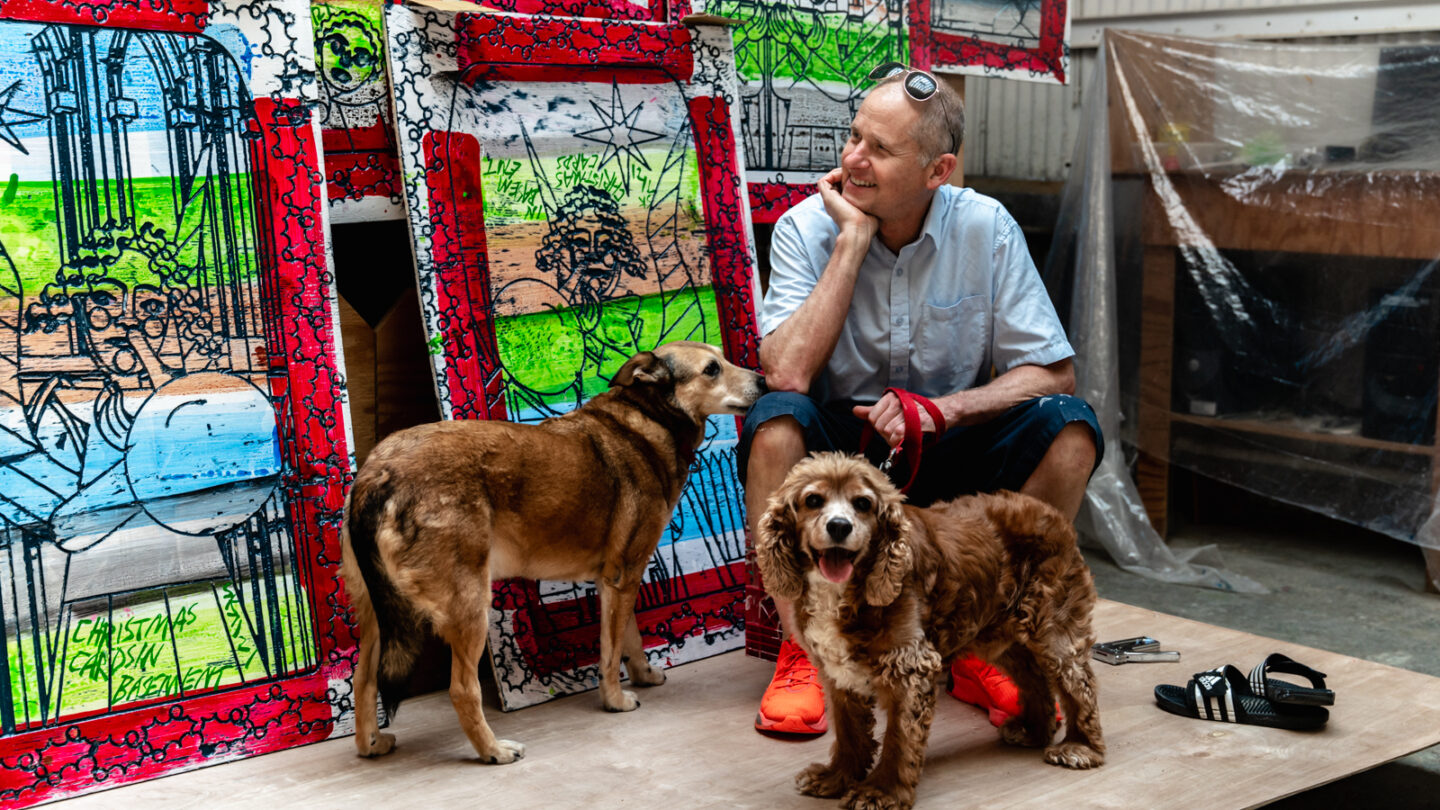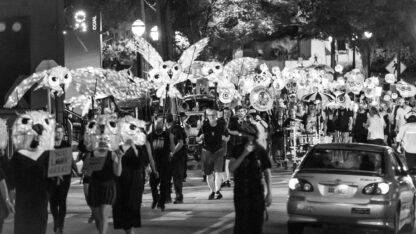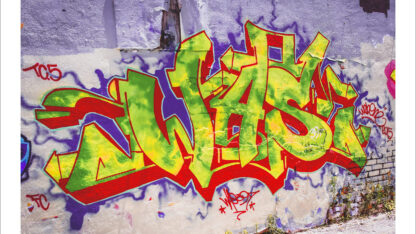Prolific artist Steve Keene shares his unique process in new art book produced by Daniel Efram

The prolific artist Steve Keene embodies a DIY rock-n-roll attitude, having painted over 300,000 pieces, including the iconic album covers from Pavement’s “Wowie Zowie” or “Why are You Okay” from Band of Horses. His distinctive style and technique have led him to be described as the “assembly-line Picasso” by Time Magazine. Keene has a democratic approach to art and has been known to give away his paintings or sell them for as little as two dollars in an effort to bring art to the people.
Longtime friend and fan Daniel Efram has spent the last six years compiling a photographic collection of Keene’s work. Through the support of Keene lovers worldwide, Efram has now produced the “Steve Keene Art Book,” a collection of pictures and stories that celebrate the wildly unique world of Steve Keene. Both artist and producer joined “City Lights” senior producer Kim Drobes via Zoom for a conversation about the impact of Keene’s philosophy and far-reaching body of work.
Interview highlights:
How, as DJs in the ’90s, Steve and his wife found a perfect art audience:
“We loved the new music – we were older than a lot of the students, so we played a lot of old music and combined it with the new music at the time, which was then Nirvana… and just to be in a basement, surrounded by tens of thousands of albums. And every album was somebody’s dream, that it was going to be the greatest album or a record of how they lived for that year,” recalled Keene.
He went on, “I’ve always loved people making homemade books, little fanzines to promote their writings or their music, and this is before people had websites. Nobody had a computer at home, really. And I just got connected to the idea, ‘Well, how come art doesn’t seem fun like this?’ I went to art school, I did all the right things, and I loved making art, but I didn’t really know how to connect, to have an audience, or what kind of people would like my work. So all that stuff I just kind of threw away, and decided to not even think of myself as an artist, but as a person who makes information; little bits of information that go out in the world.”
On valuing the process as much as the finished work:
“I love painting multiples of the same image, almost like I’m making prints. So I line up the amount that I’m gonna paint for that day or that week, depending on how much space I have, and basically I’ll do about 40 or 50 a day,” said Keene. “Then I line up all the panels in a logical sequence, and I’ll start off with the first color. It might be blue, and I just put my blue spot on all the paintings. Then I go back with the other colors and, and start with big brushes and end up with smaller and smaller, more detailed, and then at the end, I sign my name or write a few words.”
Keene continued, “I’ve always loved American art of the forties and fifties and sixties, where it’s either minimalism or things like Jackson Pollock, when, I mean, he felt he was in his paintings when he created them. He felt that there was no separation between him and the work. It became a performance… Besides music ideas, I think a lot about the sort of abstract expressionist ideas about ‘becoming’ into the painting.”
On the possibly-impossible task of a comprehensive Keene collection:
“I mean, it’s impossible to cover all of his work. It’s insane, actually,” said Efram. “But I tried to put as broad a swath of what’s out there as I could, representing from each decade that he’s been working and doing the best I can. And really, this is a big book, and I’m really proud of it. But it can’t represent his life’s work. It just isn’t that. I think Steve said this before, and I like this – it’s a ‘greatest hits.’ Like an album or a music artist, it’s a ‘greatest hits…’ but it doesn’t mean these are the only hits.”
“The Steve Keene Art Book” is out now and available for purchase at https://hatandbeard.com/products/the-steve-keene-art-book.








